The Best Fluffy Pancakes recipe you will fall in love with. Full of tips and tricks to help you make the best pancakes.
Road Cycling Power Meters: Are They Worth It?
Benefits of training with power and top power meter options.
Look—everyone’s got a power meter these days. They’re everywhere, right? On cranks, pedals, hubs… I remember when they cost like three months rent, now you can grab one for less than a decent wheelset. But here’s what’s wild: most cyclists I know, even the fast ones who drop me on climbs (which, let’s be honest, is basically everyone), they’re using these things completely backwards.

The secret isn’t complicated, but it’s… I don’t know, it’s almost too simple? Your power meter isn’t there to tell you what to do—it’s there to show you what your body’s been hiding. And once you figure out how to actually listen to it instead of just staring at numbers like they’re going to magically make you faster… well, everything changes.
The Big Secret That Everyone Misses
Your body lies. Like, constantly.
I’m serious—think about it. How many times have you felt absolutely terrible on a ride, legs heavy, breathing hard, convinced you’re getting slower and weaker… only to check your data later and realize you were crushing your usual pace? Or the opposite: felt like Superman, spinning easy, everything clicking, then looked down and—wait, why is my power 30 watts lower than normal?
Power meters reveal the truth your body tries to hide. They expose fatigue you didn’t know you had. Show fitness improvements before you feel them. Catch overtraining before it wrecks you for weeks.
Most riders treat power like a target to hit (been there, done that, got the burnout to prove it). But the real game-changer? It’s understanding the gap between what you think you’re doing and what you’re actually doing. In that gap—right there—that’s where all your breakthroughs are hiding.
Why Nobody Figured This Out Sooner
The Numbers Trap
We’re taught wrong from day one, honestly. Every training plan, every article, every YouTube video: “Hold 280 watts.” “Average 3.5 w/kg.” “Increase FTP by 10 watts.”
It’s all about chasing numbers like they’re the finish line.
But here’s what blows my mind—and I only realized this after probably two years of spinning my wheels (literally): the same wattage feels completely different depending on your recovery state. 250 watts after a rest week? Feels like I could hold it forever, chatting, watching clouds, whatever. 250 watts after three hard training days? Feels like someone’s sitting on my back.
That difference isn’t random noise or you being “mentally weak” or whatever… it’s data. Critical information about whether your body’s ready for stress or screaming for recovery.
The trick—and this is something I wish someone had told me in like 2022 or whenever I got my first power meter—is developing what coaches call “power-to-RPE calibration.” Fancy words for: when the watts feel harder than they should, stop ignoring it. Your body’s telling you something important.
More Isn’t Always… Well, More
- Modern cycling culture = obsessed with MORE
- More miles, more intensity, higher FTP, bigger numbers
- But power meters secretly know something: progress isn’t linear
- Sometimes less is exactly what breaks through plateaus
- The fatigue index nobody tracks
- Power-to-heart rate ratio across consistent efforts
- When HR climbs but power stays same = cardiovascular stress
- When power drops despite same effort = neuromuscular fatigue
- These aren’t weaknesses—they’re invitations to adapt smartly
Real talk? I spent six months in 2024 just hammering intervals because “consistency” and “no days off” and all that grindset nonsense. My FTP went… nowhere. Actually dropped a bit. Then I started tracking these patterns, backing off when my heart rate was wonky, pushing when the ratios looked good.
Gained 15 watts in two months.
Same total training time—just way, way smarter about when I pushed hard.
Efficiency vs. Just Suffering
Question that changed how I think about this whole thing: Are you getting stronger, or just getting better at suffering?
Because there’s a massive difference (and honestly I’ve spent years just getting better at suffering without getting meaningfully faster).
True improvement = producing more power with less physiological cost. Lower heart rate. Less perceived effort. Faster recovery between intervals. But most of us only celebrate the power number itself, right?
Your power meter shows efficiency through:
- Variability Index (how smooth your power delivery is)
- Power:HR ratios over time
- Cardiac drift in longer efforts
- Recovery speed between hard sections
Create benchmarks on routes you ride regularly. Don’t just ask “What was average power?”—ask “What was my HR at that power? How fast did I recover? How smooth was the power curve?”
These questions turn data into actual wisdom instead of just… numbers on a screen that you feel vaguely good or bad about.
Goals Need Reality, Not Fantasy

Most cycling goals are basically wish-casting. “I want 300 watt FTP!” Okay cool—but you’re at 240 right now, training inconsistently, sleeping five hours a night because work’s crazy and your kid’s teething and… yeah.
The gap between fantasy and reality just breeds frustration (ask me how I know).
Power meters offer truth—and truth is the only foundation for real goals.
- Establish honest baselines first
- What can you sustain for 5 min when fully rested?
- For 20 minutes? An hour?
- How much does power decline when fatigued?
- Recovery time between efforts?
With baseline reality, you set incremental targets that actually build fitness. Single-digit percentage gains that compound over months. Not fantasy leaps that lead to burnout by March.
Context Makes Data Actually Useful
Your power meter spits out thousands of data points every ride. But without context? It’s just noise.
Was that ride after three days rest or three weeks of training? Were you properly fueled, or running on coffee and yesterday’s leftover pizza? How was sleep? Stress at work? Did you have that fight with your partner that morning?
Successful cyclists combine numbers with qualitative notes:
- Energy levels (scale 1-10, whatever)
- Sleep quality
- Life stress
- Nutrition
- Even mood, honestly
Over time these patterns show what actually drives performance for your unique body. Not some pro’s training plan or what worked for your riding buddy—what works for you.
I keep a notes app on my phone, just quick voice memos after rides. “Felt sluggish, only slept 6 hours” or “Legs felt snappy, good sleep, easy day at work.” After a few months you start seeing patterns that are impossible to ignore.
Stop Collecting, Start Investigating
You’ve got the tech. You’ve captured the data. Now stop being passive about it.
Treat every ride like a conversation with your body—power meter as the translator. Ask better questions. Look for patterns not just peaks. Value efficiency as much as raw output. Build goals on truth.
The secret isn’t buying fancier equipment. (Though yeah, if you want to upgrade, I’m not stopping you—I’ve been eyeing those new dual-sided pedal meters myself.) The secret is shifting your entire mindset from chasing numbers to understanding what those numbers reveal about your actual physiological state.
Your breakthrough isn’t in the next interval session. It’s buried in data you’ve already collected but never truly examined.
Go back through your recent rides. Look deeper. Compare efforts from different weeks. Find the truth your body’s been trying to communicate.
The watts were never the point—understanding was always the secret. And once you crack that code? Everything else starts falling into place in ways you can’t even imagine right now.
Trust me on this one.
Check our Full Road Cycling Guide for more tips !





